The more trees we plant in our backyards or gardens, the more we benefit ourselves and the environment. Fruit trees are incredibly versatile and make great additions to your landscape. Here’s why:
Benefits of Fruit-Bearing Trees
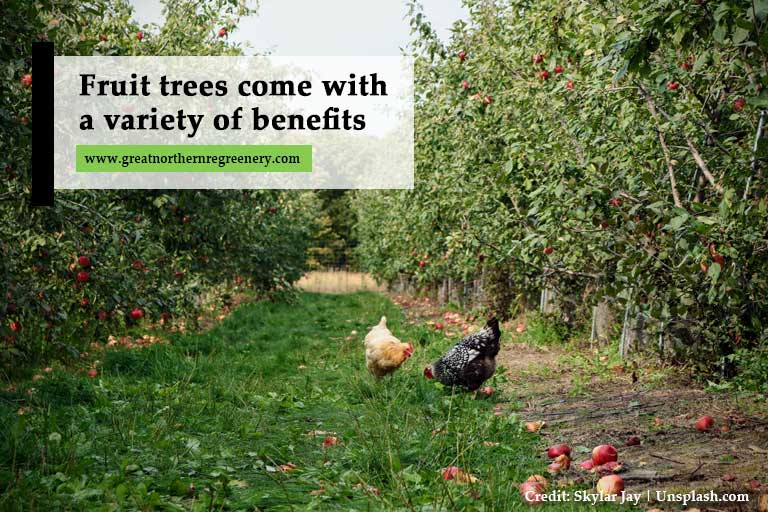
If you’ve been thinking about adding a tree to your garden, why not choose a fruit-bearing one? Fruit trees have plenty to offer:
- They contribute to people’s overall well-being
A number of noteworthy pieces of research have shown that taking a brief walk in the woods can help people feel less stressed. Trees contribute to the supply of fresh air in the environment while reducing 75% of the dust — and it not only benefits you; it can benefit your community as well.
- They help improve our health
Fruit trees provide you with a healthy, delicious, and colourful canopy. It protects you from heatstroke, relieves tension and depression, and aids in getting a good night’s sleep. Doing something as simple as sitting down and staring at trees can help lower your blood pressure. It also reduces the levels of adrenaline and cortisol, hormones that are responsible for producing stress.
- They can add to the property’s value
In order to add value to your home, trees must be well-maintained and cared for. A well-maintained tree contributes about 7% to the value of a residential property and at least 18% to the value of a commercial building lot.
- They provide free food
When your fruit-bearing tree reaches full size, it will produce a large amount of fruit. An apple tree, for example, can produce up to 300 pounds of apples. With the tremendous amount of free food it can supply, you can save on shopping costs and even sell them to make a little extra cash.
Additionally, you can keep fresh fruit on your table during harvest time. Fruit provides an endless supply of vitamins and minerals. It aids those who eat largely fruit-based diets in lowering their risk of heart disease, cancer, and diabetes.
Fruit-Bearing Trees for Small Spaces
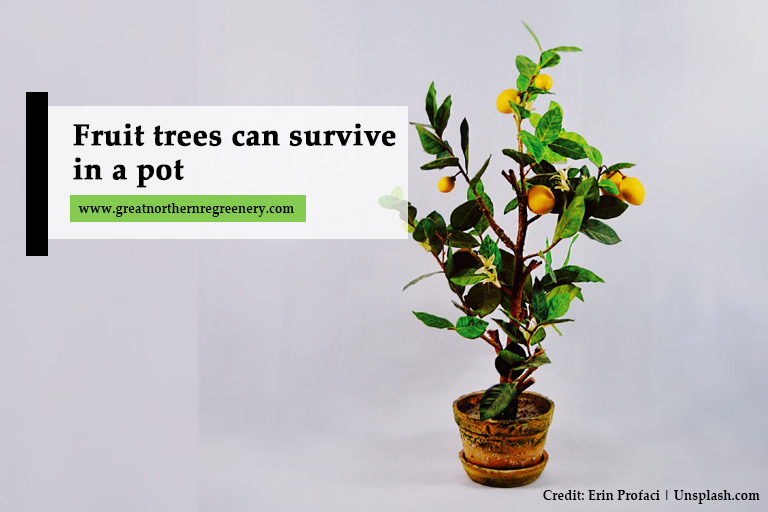
When we think of fruit-bearing trees, we usually think of how much space they’ll need as they grow. Patio trees, on the other hand, can be cultivated in even the tiniest of spaces. It’s also small enough for everyone to enjoy a selection of fruits.
“Dwarf fruit trees” is another name for patio fruit-bearing trees. They’re commonly planted in containers with stakes to keep them upright. You’ll quickly have a thriving fruit garden with the correct amount of sunshine, water, and attention.
Here are some patio tree options for you to consider.
- Apple Trees
Patio apple trees are one of the most ideal trees for your home. Because there are so many different types of apple trees that can be grown it’s important to first understand your climate. The majority of apple trees require a cold climate to thrive, while others prefer milder conditions. It’s wise to conduct some research first, depending on whether you need apples for applesauce or apple pies.
- PeachTrees
Planting peaches in a container is ideal because they blossom in March. If you put them in a container, you’ll be able to protect them from rapid temperature changes. Even if they barely reach a height of 6 ft, they can still yield full-sized fruits. Peach trees require 500 chill hours on average. These fruit-bearing trees can survive in places like Canada. If you live in a warmer climate, choose peaches that require fewer cold hours.
- Cherry Trees
It’s critical to do some research on the various types of cherry trees and how much area you need to plant them. There are cherry trees that are not self-pollinating like most fruit trees. So, if you’ve picked this variety, you’ll need to think about making room for another fruit tree.
- Meyer Lemon Trees
With Meyer lemon plants, you can immediately see the benefits of your labour after only two years. They’re popular among homeowners because they’re lovely and fragrant. This sort of tree requires very little maintenance. However, no matter how simple it is, you must follow the maintenance guide to the letter in order to get the most out of your tree. Meyer lemon trees need 6 hours of sunlight per day to thrive. As a result, make sure your container is in direct sunlight when you place it.
- Pomegranate Trees
Pomegranate trees, unlike other species of trees, have a shallow root system, making them excellent for growing in pots. Pomegranate trees can survive for up to 200 years if properly planted and cared for. Pomegranates come in three different fruit-bearing types. Nana, Provence, and the state fair are all on your itinerary. Caring for pomegranate trees requires a significant amount of water and fertilizer. Pomegranates, like Meyer lemon trees, should be placed in the brightest spot in your garden. Fruit flies are usually the only pests that target it, so you won’t have to be concerned about pest infestations or fruit and tree diseases.
- Fig Trees
Half of the standard whiskey barrels are ideal for fig tree planting. However, if it isn’t possible, several huge containers will suffice. It’s critical to plant fig trees after the last frost has passed in your area. When the weather grows cooler, you can wrap the tree with a blanket or move it to an unlit or unheated room.
Fruit-Bearing Trees for Larger Spaces
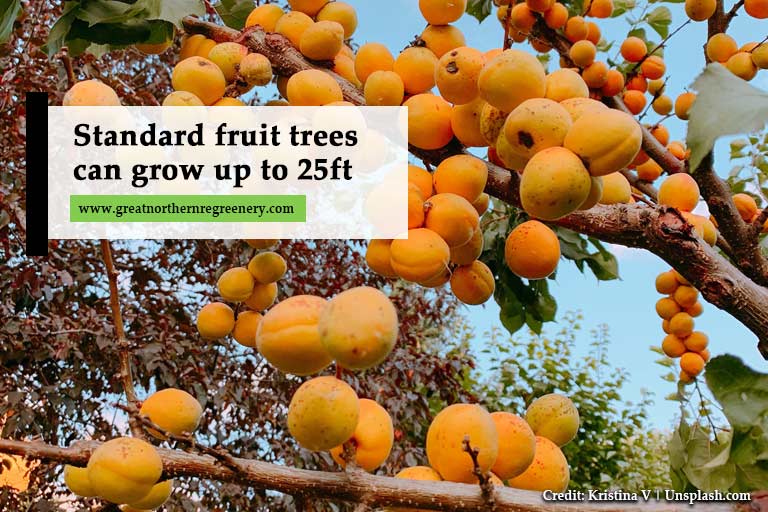
While there are many possibilities for you if you have a smaller place, if you have a larger barren lot, you can make do with larger fruit tree varieties. Some of the trees described above, such as apple trees, can grow to be quite large. However, when grown to its full size, the alternatives given below are superior.
- Plum Trees
Plum trees come in three different types. You can choose from Japanese varieties, American hybrids, or European kinds. Plum trees need loamy, well-drained soil to thrive. You’ll also require 6 to 8 hours of uninterrupted sunlight. For standard-sized plum trees, space them 20-25 feet apart. Plum trees can grow to be 16 to 20 feet tall.
- Apricots
Because apricots are only partially self-pollinating, you’ll need to plant two for the greatest results. It will produce fruit in three to four years, but it will need 5 to 7 years to reach its maximum size. In regions with mild temperatures, harvesting occurs in July, while in colder areas, it occurs in August.
- Nectarine
You’ll need to wait 3-4 years to cultivate nectarines from seeds. They grow quickly, reaching heights and widths of up to 25 feet. You don’t need to grow two of them because they self-pollinate.
Fruit Trees for Beginners
If this is your first time planting a tree, you might want to begin with something simpler. Planting pears, cherries, plums, and peaches are simple. Just remember to observe the basic and important tree-care standards at all times.
Tree Maintenance
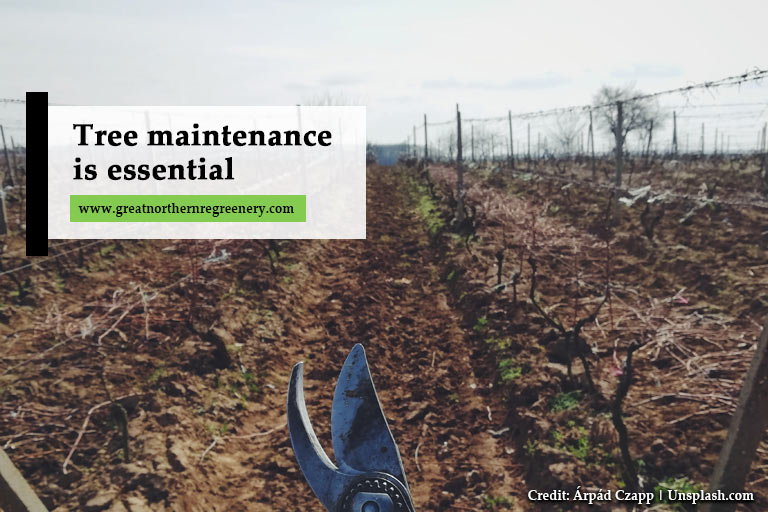
The upkeep of a tree is not as simple as you may believe. People will sometimes hire tree maintenance services to keep their trees in good form and health. You may, however, always do something on your own to ensure that your tree grows well.
- Research
Always begin by conducting research. Some planting methods will not be compatible with all trees. As a result, always arm yourself with enough knowledge to determine whether the tree is good for you and what you’ll need to do to care for it.
- Plant at the right time
Planting at the right time is critical. Fruit trees, in general, can be planted in late winter or early spring, when the ground has thawed a little and isn’t too frozen. Bare root trees, like apples and cherries, however, should be planted in winter.
- Water regularly
Water is essential for the survival of your trees, just as it is for humans. Unlike forest trees, the fruit-bearing trees you plant will require special attention. So water according to the amount of water it requires on a regular basis.
- Prune
Pruning is critical for promoting new growth in your tree. It removes the dead branches and leaves from the tree. It also helps to safeguard the people in your home, your property, and anyone else who will be in close proximity to the tree. Pruning is necessary and must be done correctly. If you don’t know how to prune, don’t hesitate to call your local tree maintenance service.
- Pest Treatment
Certain trees are susceptible to pests. If you don’t deal with it right away, the situation will just get worse until it’s impossible to control. So, if you’re suffering from a pest problem, call the professionals immediately.
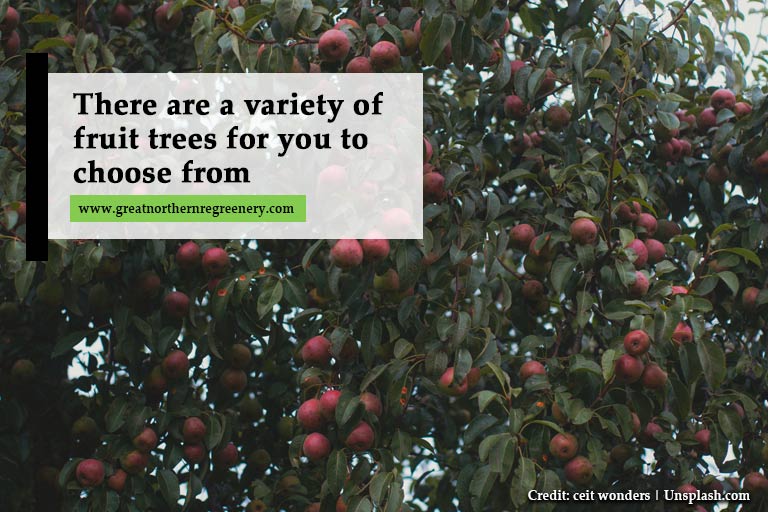
Fruit trees come in a wide range of varieties. It will provide you with several advantages, not only in terms of your physical health but also in terms of the aesthetics of your home. It’s helpful to know how they look and what their needs are so you can recognize them and care for them properly.
One surefire way to care for your trees is to consult your local arborist. Turn to Great Northern Regreenery. We will help you keep your trees in tip-top shape. Call us at (905) 775-7444.





